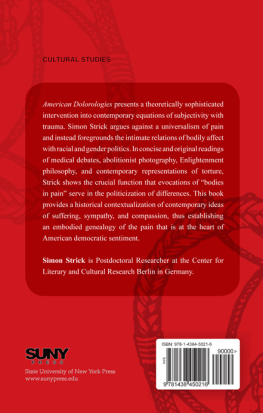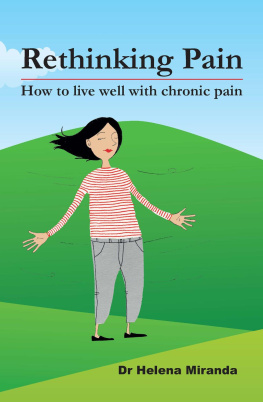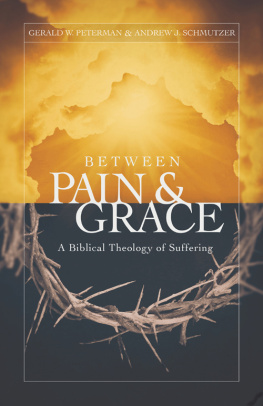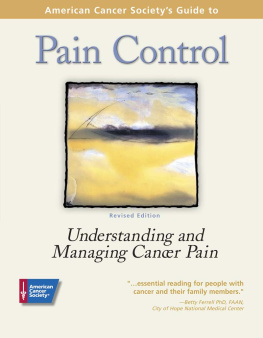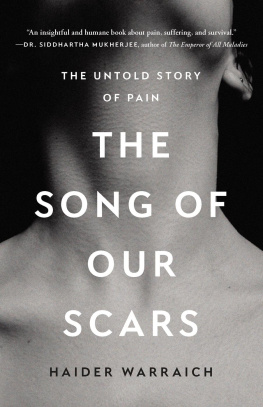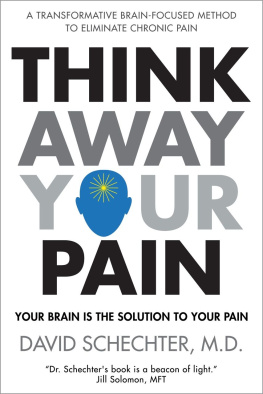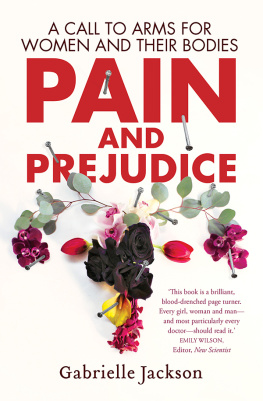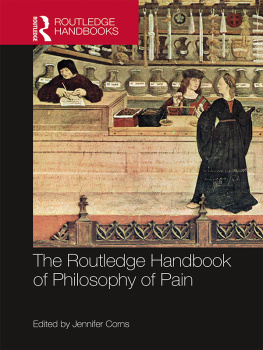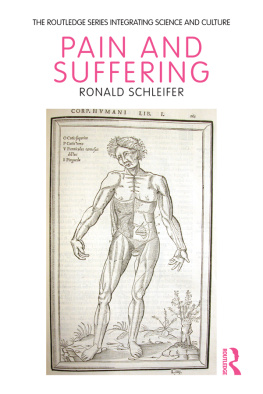AMERICAN DOLOROLOGIES
AMERICAN DOLOROLOGIES
Pain, Sentimentalism, Biopolitics
SIMON STRICK
S TATE U NIVERSITY OF N EW Y ORK P RESS
Published by
S TATE U NIVERSITY OF N EW Y ORK P RESS , A LBANY
2014 State University of New York
All rights reserved
Printed in the United States of America
No part of this book may be used or reproduced in any manner whatsoever without written permission. No part of this book may be stored in a retrieval system or transmitted in any form or by any means including electronic, electrostatic, magnetic tape, mechanical, photocopying, recording, or otherwise without the prior permission in writing of the publisher.
For information, contact
State University of New York Press, Albany, NY
www.sunypress.edu
Production, Laurie Searl
Marketing, Anne M. Valentine
Library of Congress Cataloging-in-Publication Data
Strick, Simon, 1974
American dolorologies : pain, sentimentalism, biopolitics / Simon Strick.
pages cm
Includes bibliographical references and index.
ISBN 978-1-4384-5021-6 (hardcover : alk. paper)
1. PainSocial aspectsUnited States. 2. SufferingSocial aspectsUnited States. 3. United StatesCivilization. 4. Sentimentalism. I. Title.
BJ1409.S85 2014
306.4dc23
2013014434
10 9 8 7 6 5 4 3 2 1
CONTENTS
CHAPTER ONE
What Is Dolorology?
CHAPTER TWO
Sublime Pain and the Subject of Sentimentalism
CHAPTER THREE
Anesthesia, Birthpain, and Civilization
CHAPTER FOUR
Picturing Racial Pain
CHAPTER FIVE
Late Modern Pain
ILLUSTRATIONS
| GORDON : The Scourged Back/Escaped slave displays wounds from torture. Carte de visite (1863). Source: Schomburg Center for Research in Black Culture, Photographs and Prints Division, New York (Record ID 298932; Digital ID 487461). |
| PETER (for full title see text). Carte de visite (1863). Source: National Archives at College Park, Photographic Prints in John Taylor Album, compiled ca. 18611865 (Inventory ID: 165-JT-230). |
| A Typical Negro: Article and illustration. Harpers Weekly, 4th of July 1864. Source: Library of Congress, Photographs and Prints Division (LC-USZ62-98515) |
| PETER (verso). |
| Brave Defenders of Our Country, photographed by John Carbuth. Albumen carte de visite (1863). Source: The Nelson-Atkins Museum of Art, Kansas City, Missouri. Gift of 20 Hallmark Cards, Inc., 2005.27.260. Photo: Thomas Palmer. |
| Surgical photographs, Army Medical Museum (photographed 18611865, printed later). Summary: Photographs show men displaying the wounds received during the Civil War. Upper left: John Brink, Private; Upper right: Sergeant Warden; Lower left: Samuel H. Decker, Private; Lower right: Allison Shutter, Drummer. Source: Library of Congress, Photographs and Prints Division (LC-DIG-ppmsca-10105). |
| The modern Medeathe story of Margaret Garner. Wood engraving after a painting by Thomas Noble. Harpers Weekly, 18th May 1867, 308. Source: Library of Congress Prints and Photographs Division (LC-USZ62-84545). |
| Fannie Virginia Casseopia Lawrence, a redeemed slave child, five years of age as she appeared when found in slavery. Redeemed in Virginia by Catharine S. Lawrence; baptized in Brooklyn, at Plymouth Church by Henry Ward Beecher, May 1863. Photographic Print (1863). Source: Library of Congress, Prints and Photographs Division (LC-DIG-ppmsca-11478). |
| Wilson Chinn, a Branded Slave from Louisiana. Also exhibiting Instruments of Torture used to punish Slaves. Carte de visite (1863). Source: Library of Congress, Prints and Photographs Division (LC-USZ62-90345). |
| Oh, How I Love The Old Flag. Rebecca, A Slave Girl from New Orleans. Carte de visite (1864). Source: Library of Congress, Prints and Photographs Division (LC-DIG-ppmsca-11124). |
| Our Protection. Rosa, Charley, Rebecca. Slave Children from New Orleans. Carte de visite (1864). Source: Library of Congress, Prints and Photographs Division (LC-DIG-ppmsca-11118). |
| White and Black Slaves from New Orleans. Carte de Visite (1863). Source: Library of Congress, Prints and Photographs Division (LC-DIG-ppmsca-11244). |
ACKNOWLEDGMENTS
Writing is one of the few forms of self-abuse in which a helping hand is sometimes necessary, says mystery novelist Walter Satterthwait. My affinity, thankfulness, and love go to the many, many helping hands, eyes, minds, and institutions who were instrumental in the shaping, refining, and getting done of this book.
I thank the German funding system for young scholars and the Graduate Program Gender as a Category of Knowledge at Humboldt University Berlin for their generous financial support during the years of writing. The American Studies Department at Humboldt University shaped me academically and intellectually and my thanks go out to the splendid colleagues I worked with there: Dorothea Lbbermann, Eva Boesenberg, Martin Klepper, Klaus Milich, Reinhard Isensee, Renate Ulbrich, and Suncica Klaas. The graduate program Gender as a Category of Knowledge was a wonderful and inspiring place to develop concepts, theories, and methodologies and I thank all the people I met there. Special credit goes to Christina von Braun, Volker Hess and Viola Beckmann. Elahe Haschemi-Yekani, Beatrice Michaelis, Maja Figge, Sven Glawion, Konstanze Hanitzsch, Jana Husmann, Daniela Hrazan, Claudia Brunner, Anson Koch-Rein, Wibke Straube, Julia Roth, and many more helped me with insightful commentary and fruitful suggestions.
Excellent thanks and endless gratitude to the magnificent and awe-inspiring spirit and mind of Gabriele Dietze who as supervisor, discussion partner, and general councellor on all things mundane and academic was instrumental in guiding this project, and myself.
Beth Bjorklund, Claire Raymond, Susan Fraiman, Jennifer Wicke, and Jennifer Ray Greeson were wonderful colleagues at UVA and critically provided support and advice during the completion and publishing of this book. Thanks also to audiences and colleagues wherever, who listened to the seldom-conclusive ideas and arguments that eventually added up to this text. My thanks to the many people in Charlottesville, Dublin, Wien, Lausanne, Bremen, Weimar, and Berlin.
My gratitude goes to the many people who provided spaces to live and work, and offered patience and support: WG Blinkenlichten, Gaby Dietze, and Michael Lattek in Berlin, Jacqueline Burkhardt and Thierry in Banyuls-Sur-Mer, and the wonderful Harbaugh family in Cville for shelter and storm. I greatly thank my family and friends for supporting me and enjoying the various stages of success with me. Carsten Junker deserves special mention for unexpected lessons about friendship.
Susann Neuenfeldts personality, mind, work, and heart can be felt everywhere in this book. I express my gratitude and love to your wonderful presence, it tempts me in and drives me far away.
This book is dedicated to the memory of Gnter H. Lenz.
ONE
WHAT IS DOLOROLOGY?
Who is embodied, and how, and what is served by the sensual turn?
Lauren Berlant, Critical Inquiry, Affirmative Culture
In October 1852, one of the chief medical authorities in the emerging field of clinical obstetrics, Dr. James Young Simpson, wrote a ferocious letter to his London colleague Dr. Henry Ramsbotham. Simpson, the first medical professional to administer anesthetic agents in childbirth, made a comparison between the agonies of labor pain and those of corporeal punishment of slaves in order to convince his doubtful critic of the benefits of etherization. His comparative argument elucidates how pain in marginal bodies took on social and political meanings in the nineteenth century:

